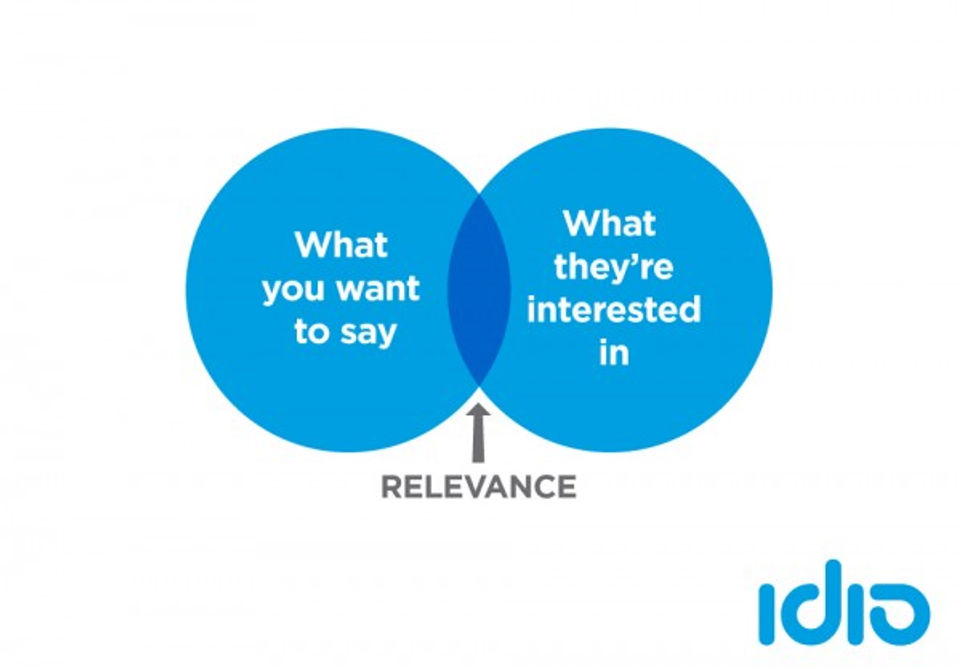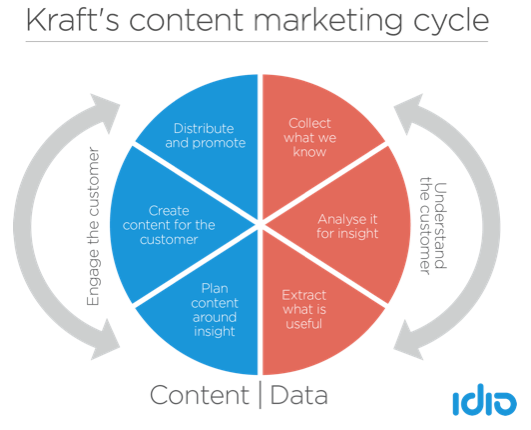Use Data to Help Your Engagement Conundrum
- Fahad H

- Apr 24, 2015
- 4 min read

Too many marketers look at content engagement as an art form. They fail to validate their content strategy and content topics against their customers’ needs and wants. LinkedIn’s Jason Miller recently echoed this thought:
“What keeps me up at night is wondering if we are too ahead of our market in our content strategy.”
Content marketing is often conceptualized as the overlap between what the audience is interested in and what the company wants to say. Yet more often than not, marketers measure and value the company side of this Venn diagram to a much greater extent than the audience side.

What they end up with is company-centric rather than customer-centric content. How can we as content marketers step up our game to better assess the customer side of the diagram?
You also should cultivate data to truly deliver content that addresses both what your brand wants to say and what your audience is interested in.
Create context and use it
Buyer personas should form the backbone of every content marketing strategy. These prospect profiles enable you to congregate the data related to your audience segments – their specific needs, preferences – with the data related to buying behavior involved in purchasing your product.
Personas are particularly helpful in B2B marketing to remind us that we’re not selling to businesses but that we’re selling to people.
Fortunately, many data sources can help us keep up with individuals’ changing context, including:
Demographic data – personal details (name, age, ZIP code, etc.)
Firmographic data – professional characteristics (role, organization size, etc.)
Social media data – what they say online and whom they influence
Lead scoring – their interactions with your organization
Interest data – the intent exposed from what they have read on your platforms
There are a range of software platforms and means to collect these insights: A simple lead-capture form with fields including name, company, role, etc., would be sufficient to capture demographic and firmographic data. To understand your audience’s online behaviors, look at social media monitoring tools such as Brandwatch or Hootsuite. Use lead-scoring tools offered in every mainstream marketing automation solution including Pardot, HubSpot, and Marketo. Finally, interest data – the newest source – is something we’re pioneering at idio.
Of course, it’s no good just collecting this stuff – you need to act on it.
Consolidate the information to give your organization a real-time view of key individuals and segments.
Use this insight to optimize your lead generation around the right prospects.
Personalize content and propositions.
Measure and iterate
Kraft’s Director of Data, Content, and Media Julie Fleischer brought this methodology home last year at Content Marketing World. Kraft’s content marketing now generates the equivalent of 1.1 billion ad impressions a year and a four-times-better return on investment than targeted advertising.
These returns are possible because of Kraft’s rigorous commitment to:
Collect content performance data
Analyze the data for insight (i.e., which content topics resonate with its audiences)
Execute its content marketing against the new insight by rapidly iterating the content types and themes

The feedback loop created by Kraft’s content engine enables the company to crack the engagement conundrum, while measuring the same traffic, viewership, and engagement metrics as everybody else does.
A data-driven perspective means you can identify which content topics are resonating with your audience, then optimize and iterate your efforts accordingly.
Go intelligent
What members of your audience choose to read is highly indicative of the hopes, fears, dreams, and interests that drive their purchasing decisions. Think about it in your own life: You clicked on this article because you have some interest in the topic of engagement as it relates to content marketing.
Of course, one click isn’t enough to build an accurate picture of you, but if we track your reading arc on CMI we soon could build an increasingly accurate picture of which topics interest you and use that to identify your current concerns and needs (engagement, content marketing, benchmarking, etc.)
Capturing the full picture of your audience’s engagement, like Kraft does, requires you to start before your audience ever sees the content. Using proper metadata, tags, etc., consistently enables your brand to track more than traffic – you can track whether your content strategy delivers what your audience needs and wants.
Tracking readership-based metadata tags and traffic enables you to identify gaps in your content coverage, as well as saturated topics. For example, CMI may find that content with metadata including words such as “benchmarking,” “engagement,” and “content marketing” are popular with its readers, but content tagged with “content audit,” “personalization,” or “WordPress” is less popular. Now, CMI can go back to its content strategy and creation to produce content that better addresses the revelation of the metadata tracking.
Kraft tags its web content and tracks more than 22,000 attributes based on the audience’s behaviors and engagement. With 100 million visitors to its web properties annually, this measurement necessitated the integration of its content and data management platforms.
You can track your database contacts against their URL click activity (and related metadata) to immediately create an interest profile or tag cloud of the most-read topics for each prospect or customer – no need to dig into the in-depth details of each person’s reading profile.
Conclusion
The best content marketing is neither a perfected art nor an exact science, but a combination of both. By always keeping at least one eye on data, you are better positioned to deliver not only what your audience wants but what your brand needs – an engaged audience:
Identify data already available to profile your audience segments – Use existing information (yours and others’) to better understand for whom you are developing content.
Evaluate metadata to examine the breadth of your content – Gain a global view of the catalog of content you have produced.
Analyze traffic under the metadata umbrella to understand what topics are working – Move your insights from anecdotal to data-driven.
Measure, measure, measure – Identify which topics are working and double down on them.
Make this analysis available across the company – Share the insights derived from content consumption to inform activities across the business.
Want to learn more about how to tie data to your strategy? CMI invites you to listen to the webinar, see the slides, or read the transcript – Creating a Content Strategy With Data at the Core.
Cover image by Viktor Hanacek, picjumbo, via pixabay.com








Comments